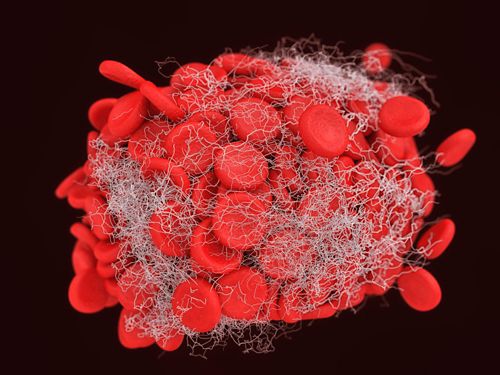Menu
Close
Back
Welcome to
Together is a new resource for anyone affected by pediatric cancer - patients and their parents, family members, and friends.
Learn MoreDysfibrinogenemia is a rare medical problem that affects blood clotting. If a person gets injured and bleeds, their blood will form a gel-like plug (clot) that stops the bleeding. A protein called “fibrinogen” (Factor 1) helps form this clot.

Blood clot showing hair-like fibrinogen clumping the red blood cells together.
If your child has dysfibrinogenemia, their fibrinogen protein does not work properly. Your child’s blood may have a problem forming these clots. This problem is passed down to a child from one of their parents.
Another related problem, “acquired dysfibrinogenemia,” does not come from the parents. This comes from some cancers or treatments. Acquired dysfibrinogenemia can also happen if your child has an autoimmune disease (when the body’s immune system attacks itself).
Children with dysfibrinogenemia:
Your child’s doctor will ask for a medical history and look for signs of bleeding. Your doctor may also examine your child and check to see if your child’s spleen is bigger than normal. The spleen is an organ that filters the blood and removes old blood cells. It can get bigger if your child has a disease that damages red blood cells, like dysfibrinogenemia.
Your child may also get medical tests such as:
Blood clotting tests (also called blood coagulation panels) measure the time it takes for a sample of blood to clot. This test shows if the fibrinogen protein is working correctly. Blood clotting tests include other blood tests like PT (prothrombin time), aPTT (activated partial thromboplastin time), and TCT (thrombin clotting time). These tests give the care team more detailed blood clotting information.
Your child’s treatment will depend on their symptoms, their medical problem, and the family’s history of blood clotting and bleeding problems. Many people with dysfibrinogenemia do not need treatment. Your child might be treated with:
See “Factor 1”, National Hemophilia Foundation at hemophilia.org
–
Reviewed: July 2022